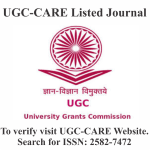MAJULI RAAS MAHOTSAV AND ITS PRESENT-DAY RELEVANCE WITH RESPECT TO SOCIO-ECONOMIC DEVELOPMENT OF MAJULI
DOI:
https://doi.org/10.29121/shodhkosh.v5.i2.2024.1065Keywords:
Majuli, Raas Mahatsov, Culture, Development, Vaishnavism, SatraAbstract [English]
Majuli, the world's largest river island (Guinness World Records) situated in the Brahmaputra River in Assam, India, hosts an annual cultural extravaganza in the month of November known as the Raas Mahotsav. This research article explores the historical and cultural significance of the Majuli Raas Mahotsav and analyses its present-day relevance in contributing to the socio-economic development of Majuli. For this study secondary data is collected through review of academic literature, from government reports, government websites and media articles. The study provides a comprehensive analysis of how the festival contributes to local economic growth, cultural preservation, and community cohesion. By examining the impact of the festival on tourism, local businesses, and community engagement, this study aims to shed light on the potential of cultural events like Majuli Raas Mahotsav as catalysts for regional development. This research contributes to the ongoing discourse on leveraging cultural heritage for sustainable development and offers valuable insights for policymakers, researchers, and cultural enthusiasts alike.
References
ANI. (2023, November 28). Raas Mahotsav Begins in Assam’s Majuli, World’S Largest Inhabited River Island. Hindustan Times.
Bhuyan, P. (2023, May 19). Raas Mahotsav and the Satras of Majuli. People’s Archive of Rural India.
Chanda, S. (2019). Bhaona Masked Culture Of Majuli. Pratidhwani the Echo, VIII(I), 279–298.
Devi, P., Shyam, A., & Sonowal, B. M. (2022). Satriya Culture and Srimanta Sankardeva’s Contributions to Education. International Journal of Health Sciences (IJHS) (En LíNea), 8662–8668. https://doi.org/10.53730/ijhs.v6ns3.8056 DOI: https://doi.org/10.53730/ijhs.v6nS3.8056
Hazarika, B. (2016). Rural Tourism and Sustainable Livelihoods A Case Study of Majuli Island of Assam. International Journal of Scientific and Research Publications, 66, 343–345.
Hussain, W., & Mahanta, B. J. (2010). Sattras and Dargahs of Assam (1st ed., Vol. 1) [English]. A Word Weaves India Publication.
Khargharia, B. (2011). Tourism in Assam: Problems and Prospects. In Assam Tourism Opportunities and Policies (1st ed., Vol. 1, pp. 35–53). Department of Commerce, Jhanji H.N.S. College, Sivasagar.
Konwar, J. (2017). Majuli as a Tourism Destination: Reality and Challenges. In Majuli – Resources and Challenges (1st ed., Vol. 1, pp. 156–181). Authorspress, New-Delhi.
Largest river island. (n.d.-b). Guinness World Records.
Macleod, D. V. L. (2004). Tourism, Globalisation and Cultural Change. In Multilingual Matters eBooks. https://doi.org/10.21832/9781873150733 DOI: https://doi.org/10.21832/9781873150733
Majeed, I., Bhat, A. H., & Azam, R. (2023). The Role of Government in Promoting Handicraft Industry: A Case Study of Kashmir. ShodhKosh: Journal of Visual and Performing Arts, 4(1). https://doi.org/10.29121/shodhkosh.v4.i1.2023.356 DOI: https://doi.org/10.29121/shodhkosh.v4.i1.2023.356
Mazumder, T. (2005). Sattra Darpon (1st ed., Vol. 1). Mazumder Puthi Prakason, Nagaon.
Mishra, K., & Tamuli, P. (2022). Sattriya Culture a Tool for Social Development: with Special Reference to the Vaishnavite Monasteries. In Journal of Positive School Psychology, Journal of Positive School Psychology: 6(8), 8778–8785.
Nath, D. (2009). The Majuli Island Society, Economy and Culture (1st ed., Vol. 1). Anshah Publishing House, Delhi.
Neog, M. (1998). Early History of the Vaiṣṇava Faith and Movement in Assam: Śaṅkaradeva and His Times. (1st ed., Vol. 1). Motilal Banarsidass Publisher.
Neog, M. (2004). Cultural Heritage of Assam. (1st ed., Vol. 1). Omsons Publications.
Pearce, P. L. (1995). From Culture Shock and Culture Arrogance to Culture Exchange: Ideas Towards Sustainable Socio-Cultural Tourism. Journal of Sustainable Tourism, 3(3), 143–154. https://doi.org/10.1080/09669589509510719 DOI: https://doi.org/10.1080/09669589509510719
Petrevska, B. (2012). The Role of Government in Planning Tourism Development in Macedonia. Innovative Issues and Approaches in Social Sciences, 5(3). https://doi.org/10.12959/issn.1855-0541.iiass-2012-no3-art07 DOI: https://doi.org/10.12959/issn.1855-0541.IIASS-2012-no3-art07
R, S. R., & Sundararaman, B. (2021). A Case Study on Sustainable Business of Indian Art and Craft Industry. European Union Digital Library. https://doi.org/10.4108/eai.7-12-2021.2314520 DOI: https://doi.org/10.4108/eai.7-12-2021.2314520
Sahariah, D., Singha, K., Bora, D. K., Kundu, S., Das, T., Sen, S., Das, K., Mili, B., Baruah, J., Sarma, K., Saikia, M., & Saikia, A. (2013). Majuli at the Crossroads: A Study of Cultural Geomorphology. Space and Culture, India, 1(2), 12–20. https://doi.org/10.20896/saci.v1i2.26 DOI: https://doi.org/10.20896/saci.v1i2.26
Sarma, J., & Phukan, M. (2004). Origin and Some Geomorphological Changes of Majuli Island of the Brahmaputra River in Assam, India. Geomorphology, 60(1–2), 1–19. https://doi.org/10.1016/j.geomorph.2003.07.013 DOI: https://doi.org/10.1016/j.geomorph.2003.07.013
Sharma, K. (2013). Tradition and Tribulation: The Monastric Satras of Assam [PhD Thesis]. Department of Geography, Gauhati University.
Tamuli, P., & Mishra, K. (2023). Folk Media and Social Development: A Study on Bhaona and Chhau Performing arts. Journal of Communication and Management, 2(02), 135–138. https://doi.org/10.58966/jcm20232211 DOI: https://doi.org/10.58966/JCM20232211
Published
How to Cite
Issue
Section
License
Copyright (c) 2024 Padmaja Tamuli

This work is licensed under a Creative Commons Attribution 4.0 International License.
With the licence CC-BY, authors retain the copyright, allowing anyone to download, reuse, re-print, modify, distribute, and/or copy their contribution. The work must be properly attributed to its author.
It is not necessary to ask for further permission from the author or journal board.
This journal provides immediate open access to its content on the principle that making research freely available to the public supports a greater global exchange of knowledge.




















